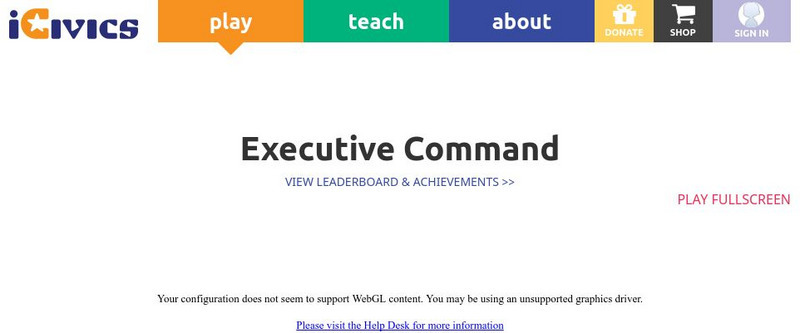Curated OER
Whose go the Power: Checks and Balances
After introducing the three branches of US government, test the class' understanding of government powers. They are asked a series of questions regarding a federal act and then, answer which branch has the power of decision making....
Curated OER
The Role of the Executive Branch in the Lawmaking Process
Students examine Article I, Section 7, and Article II, Sections 2 and 3, of the U.S. Constitution, explain the president's role in the lawmaking process, and define the term veto.
Curated OER
All Those In Favor
Students share opinions about measures recently passed in their school, vote on and argue for and against hypothetical school policies, and respond to a "president's" decision to pass or veto the measures.
Curated OER
Reconstruction: "Healing Wounds, Mending Fences"
Students examine material on the Civil War Era to develop an understanding of the major issues that were resolved. This six lessons unit provides a closer glimpse into our nation's political and ethical history.
Curated OER
Ports in the Storm
Students explore national security issues related to the possibility of a Dubai-owned company operating an American port. Opinions are solicited and debated.
Other
President Gerald Ford's Veto of Railroad Retirement
Text of the message that President Ford wrote to the House of Representatives in 1974 stating his reasons for his veto of the Railroad Retirement Benefits Legislation.
US House of Representatives
U.s. Capitol: How a Bill Becomes a Law
Learn about the legislative process in the United States through this interactive tutorial, which demonstrates to students how a bill becomes a law.
The Dirksen Congressional Center
Congress Link: Lesson Plans
The Dirksen Congressional Center provides abundant lesson plans on all aspects of the US Congress and the US Constitution. All lessons contain time frames, objectives, and links to material, and are built around Bloom's taxonomy.
iCivics
I Civics: Executive Command
Ever wanted to be President for a day? In Executive Command, you can be President for four years! Try to accomplish what you set as your agenda while facing the challenges and responsibilities that crop up along the way. Being...








